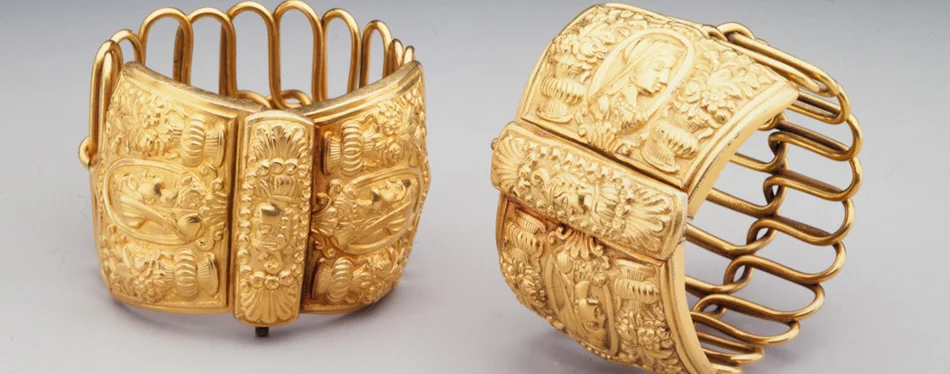Household and personal objects
Examples of household and personal objects are exhibited in the gallery. Handcrafted gold and silver works of art and Kütahya ceramics dating back to the 18th century are displayed. Kütahya potters produced both Christian and Muslim sacral objects, including chalices, pilgrimage votives, ewers, and basins. Over 10,000 Kütahya tiles were used for the Armenian Cathedral of Saint James in Jerusalem.
The Armenian highlands are rich in various kinds of metals, and the creation of metal objects in the region dates back to ancient periods of history. Native peoples learned how to work with copper as early as the seventh to fifth millennium B.C. and were working with gold and silver by the third millennium B.C. Excavations in Yerevan have yielded gold ornaments, medallions, rings, and other metal artifacts dating to the second millennium B.C.
By the nineteenth and early twentieth century, luxury silver articles such as thimbles, tea cups, tea strainers, spoons, metal belts, snuff boxes, and tobacco and/or cigarette cases were popular.

